
Herbs and Lifestyle Tips for Work-Life Balance
We live in challenging times; for many, balancing work, childcare, parental caretaking, and overseeing children’s education requirements is exhausting. Over the past decade, we have continued to experience the erosion of boundaries between work and home life. Yet, today, the impact of a worldwide pandemic has compounded the challenges of maintaining this work-life balance as never before. The level of stress that adults are experiencing is validated in a 2019 survey on Stress in America which found nearly half of adults have had trouble sleeping and more than three-quarters report physical or emotional symptoms of stress manifested as headaches, fatigue, and sleep disturbance (American Psychological Association, 2019). If you are feeling increased stress and anxiety, know that you are not alone.
It probably doesn’t surprise you that continual stress and anxiety can affect almost every organ system in our body. For example, stress can affect brain-gut communication, triggering digestive issues, like bloating and discomfort (van Tilburg, n.d.). Ongoing anxiety, which continues to activate the nervous system, causes long-term wear and tear on the body (Berntson, n.d.). Lastly, stress can contribute to long-term consequences for the heart and circulatory system, increasing the risk of hypertension, heart attack, and even stroke (Burg, n.d.).
Many suggestions for balancing work and home/personal life assume that we leave the office at the end of the day. With many folks working remotely, we can no longer put the office out of sight and out of mind, prompting us to look for more creative solutions to ensure a healthy work-life balance.

Taking Time for You
At the beginning of every air travel flight, a flight attendant asks passengers to place the oxygen mask over their own mouth and nose before assisting others. This is an analogy for the importance of self-care, and now more than ever, this rings true. Self-care is an essential strategy for work-life balance. Not only does this benefit you, but it has a positive impact on your family.
So why is it so difficult for us to prioritize our own needs? For some, self-care feels like an indulgence or a selfish act. Yet, it is a critical component of maintaining balance for ourselves. One aspect of self-care is self-compassion. Recent research in self-compassion points to a lower level of emotional turmoil and a higher level of relational well-being (Yarnell & Neff, 2013). Self-compassion starts with moving towards balance, not perfection; it is about doing the best that you can without criticizing or punishing yourself for not doing things exactly the way you imagine they should be done. Taking even one step forward towards extending compassion to oneself can help to shift our emotions and reduce stress.
In addition to cutting ourselves some emotional slack, self-care can include a variety of methods to address stress and move towards a more balanced state. Stress reduction techniques constitute a safe and effective approach for reducing stress (Larvogli & Darviri, 2011) and include mindfulness practices, psychotherapy, exercise, deep breathing techniques, journaling, sketching, laughing, and dancing. Employing even one of these strategies can make a noticeable difference in easing stress. It’s helpful to integrate simple, small steps over a short period of time, like a week or a month, and to congratulate yourself on any successes you achieve.
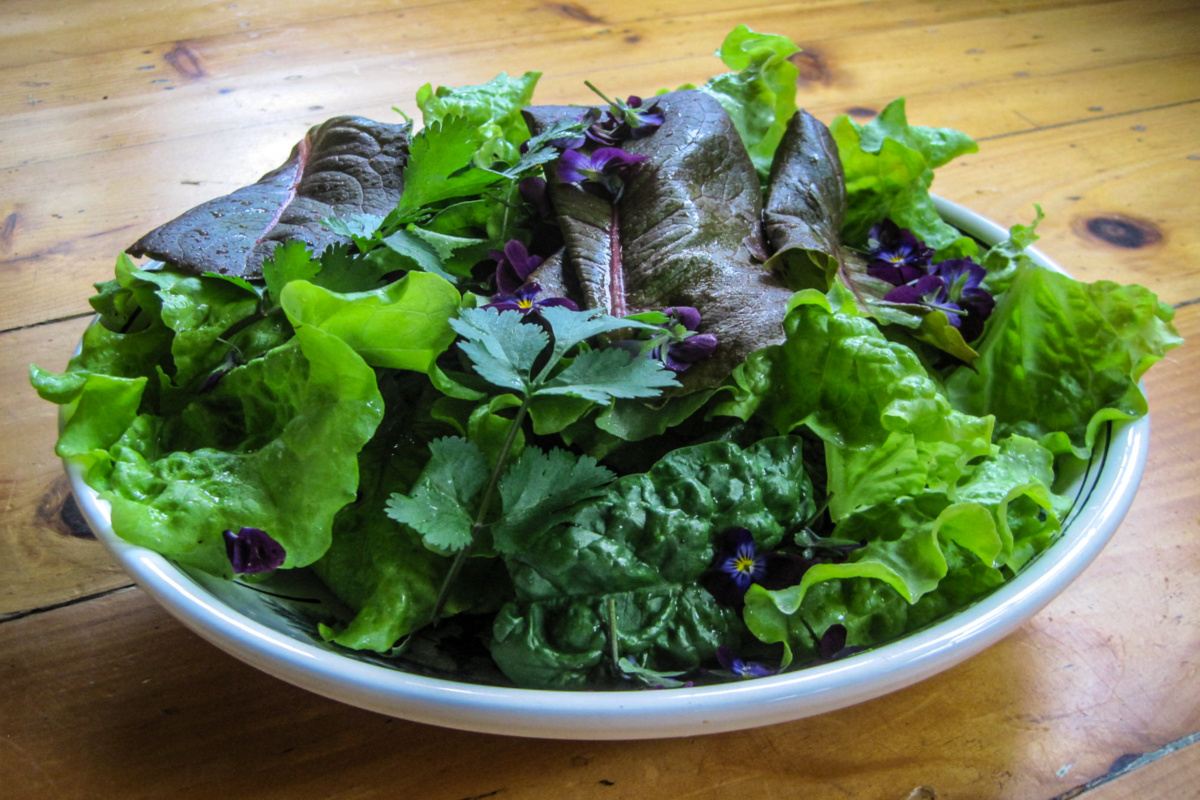
Foods for Stress and Anxiety
We all know that a diet of whole grains, vegetables, and fruits is a healthier choice than eating simple carbohydrates found in processed foods. Complex carbohydrates are metabolized more slowly and therefore help maintain a more even blood sugar level, which creates a calmer feeling. Yet, for many, feelings of stress result in poor food choices that lead to not feeling great, which exacerbates the situation. Reversing this trend is key to recognizing the link between our brain, digestive system, and emotional health since a large percentage (about 95%) of serotonin receptors are found in the lining of the gut (Martin et al., 2018).
Recent research has looked at how key nutrients can help to reduce anxiety (Naidoo, 2019). Magnesium has shown beneficial results in cases of mild anxiety and premenstrual anxiety (Boyle et al., 2016). Foods rich in magnesium include leafy greens, pumpkin and chia seeds, and almonds (National Institutes of Health, n.d.). In another study, consuming probiotic foods such as yogurt, sauerkraut, and kimchi pointed to a reduction in social anxiety (Hilimire, 2015). Finally, there is growing evidence that a diet rich in antioxidants may help to ease anxiety (Xu, 2014). Amla berries, dark berries, goji berries, kale, dark chocolate, and pecans are all high in antioxidants and would be a good addition to a healthy diet.
Herbs for Stress and Anxiety
Lucky for us, there are numerous herbs that can help soothe our stress and calm anxiety. In developing an action plan to support our nervous, endocrine, and digestive systems, we look to three herbal actions, namely, nervines, adaptogens, and carminatives. What is an herbal action, you ask? An herbal action indicates the effect that an herb has in the body. You can read more about that here!
Today, herbalists employ nervines to strengthen and feed our nervous system and support calming and quieting of nervous tension (Tierra, 2003). Adaptogens restore normal tone and function to the adrenal glands and improve the body’s resilience to stress (Tierra, 2003). As stated above, the connection between stress and digestion can disrupt the gut’s nervous systems, which in turn influences the brain and mood (Tilburg, n.d.). The use of carminatives can support the digestive system, helping to soothe and settle tension in the gut wall (Hoffmann, 2003).
Oat (Avena sativa)
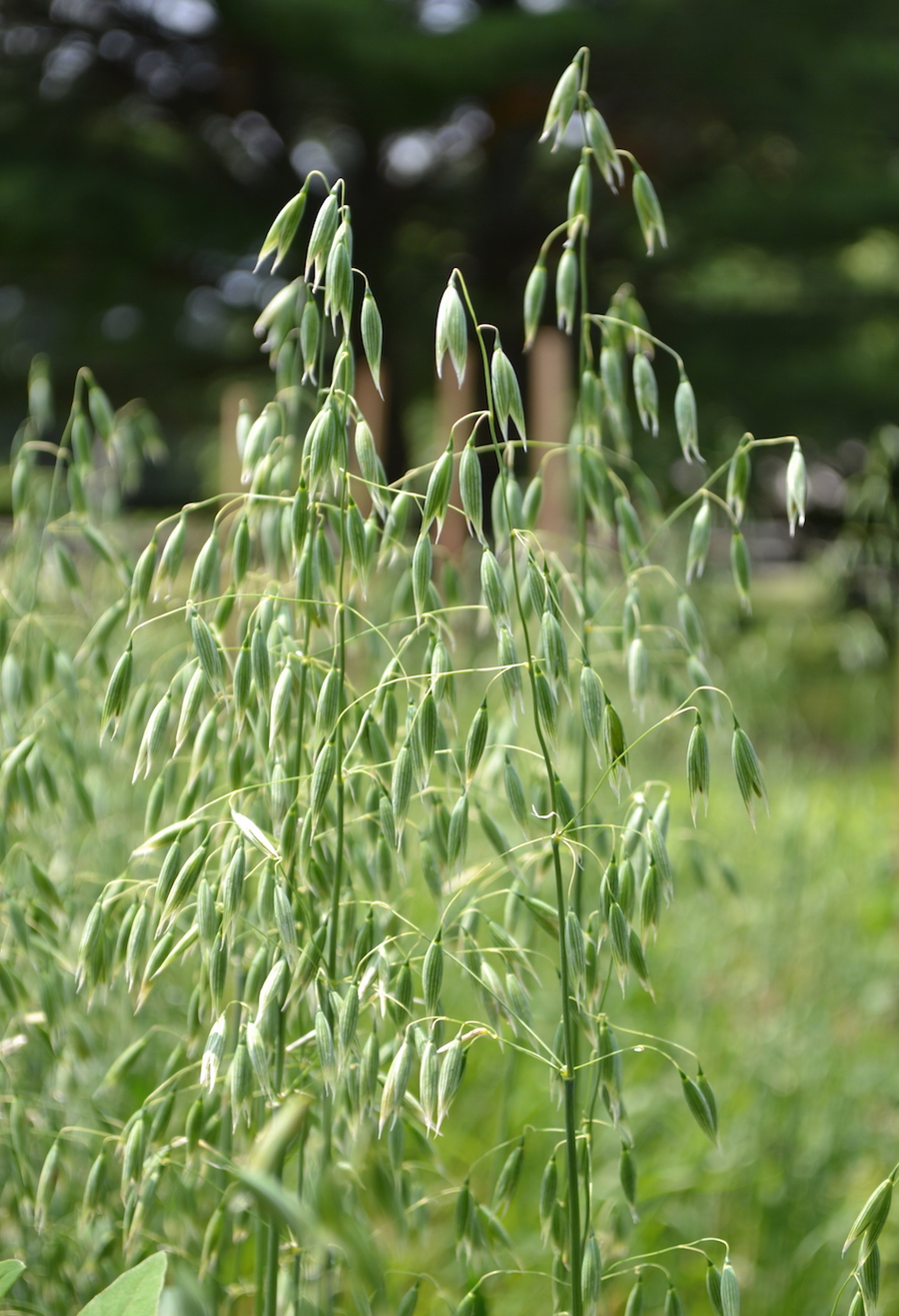
It is hard to imagine a more nutritious and therapeutic grain than oat. The fresh milky tops of oat harvested when bursting with their milky latex (before hardening into the seed we know as the oat) contain high levels of minerals, vitamins, and polysaccharides (Easley & Horne, 2016). Milky oats gently address exhaustion, an inability to concentrate, and a loss of libido (Tilgner, 1999) through their broad-acting support of the nervous, endocrine, musculoskeletal, and cardiac systems (Holmes, 2007). Such a nutritive and gentle herb can be used long term for those experiencing mental and physical exhaustion, irritability, and lack of focus (Easley & Horne, 2016).
Oatstraw, the stem of the oat plant, is considered milder than milky oat in terms of nervous system support but is packed with minerals and other phytoconstituents. Primarily used for its restorative effects, oatstraw is a common ingredient in nutritive teas (Holmes, 2007). A soothing oatstraw infusion bath is relaxing to sore or painful muscles or can be used as a wash for skin conditions (Holmes, 2007).
Read more about Avena sativa here and here.
Barley (Hordeum vulgare)
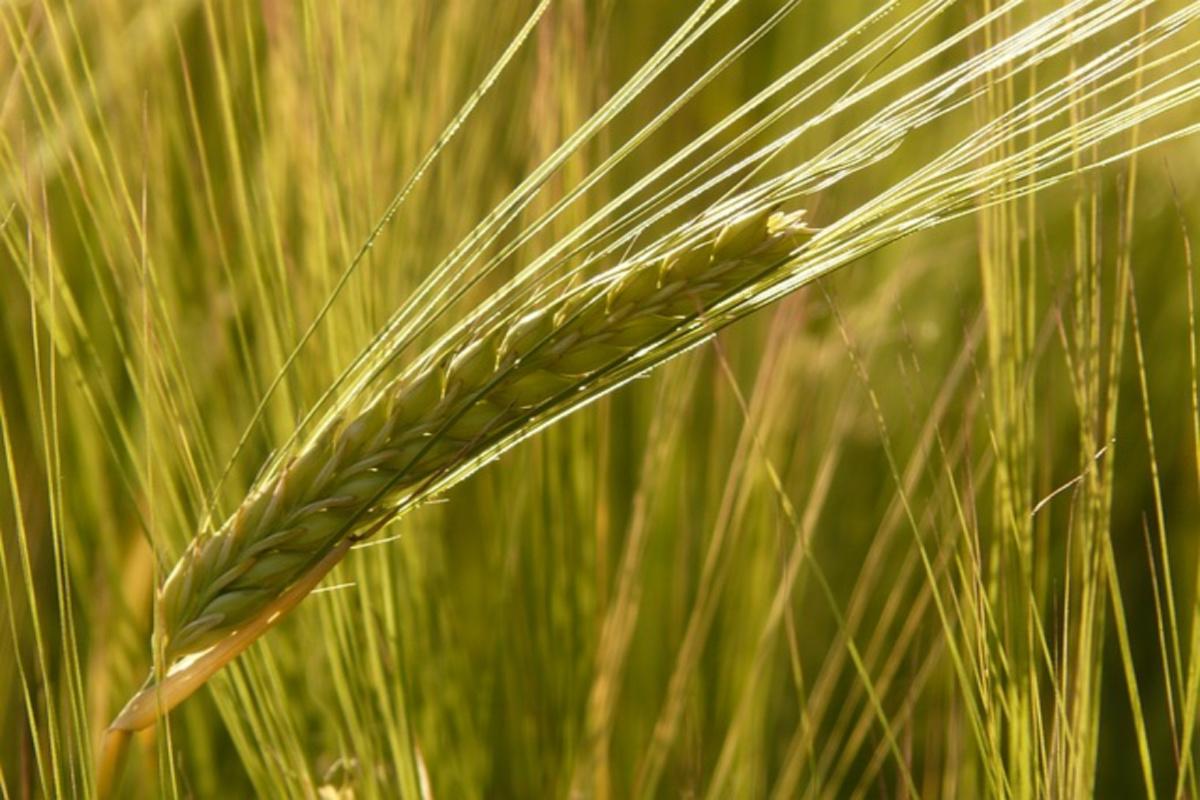
Barley tea, an infusion made from roasted barley grain, is a staple across East Asia. With its toasty flavor and slightly bitter taste, it is the perfect tea for an early evening beverage. Barley tea contains both melatonin and tryptophan, helping to ease stress and aid in relaxation (Meng et al., 2017). Tryptophan, an amino acid tied to sleep, synthesizes serotonin, a neurotransmitter essential in regulating sleep and mood (Silber & Schmitt, 2010). Similar to the effects of eating a turkey dinner, which also contains tryptophan, barley tea helps to take the edge off and aid in relaxation.
Tulsi (Ocimum tenuiflorum)
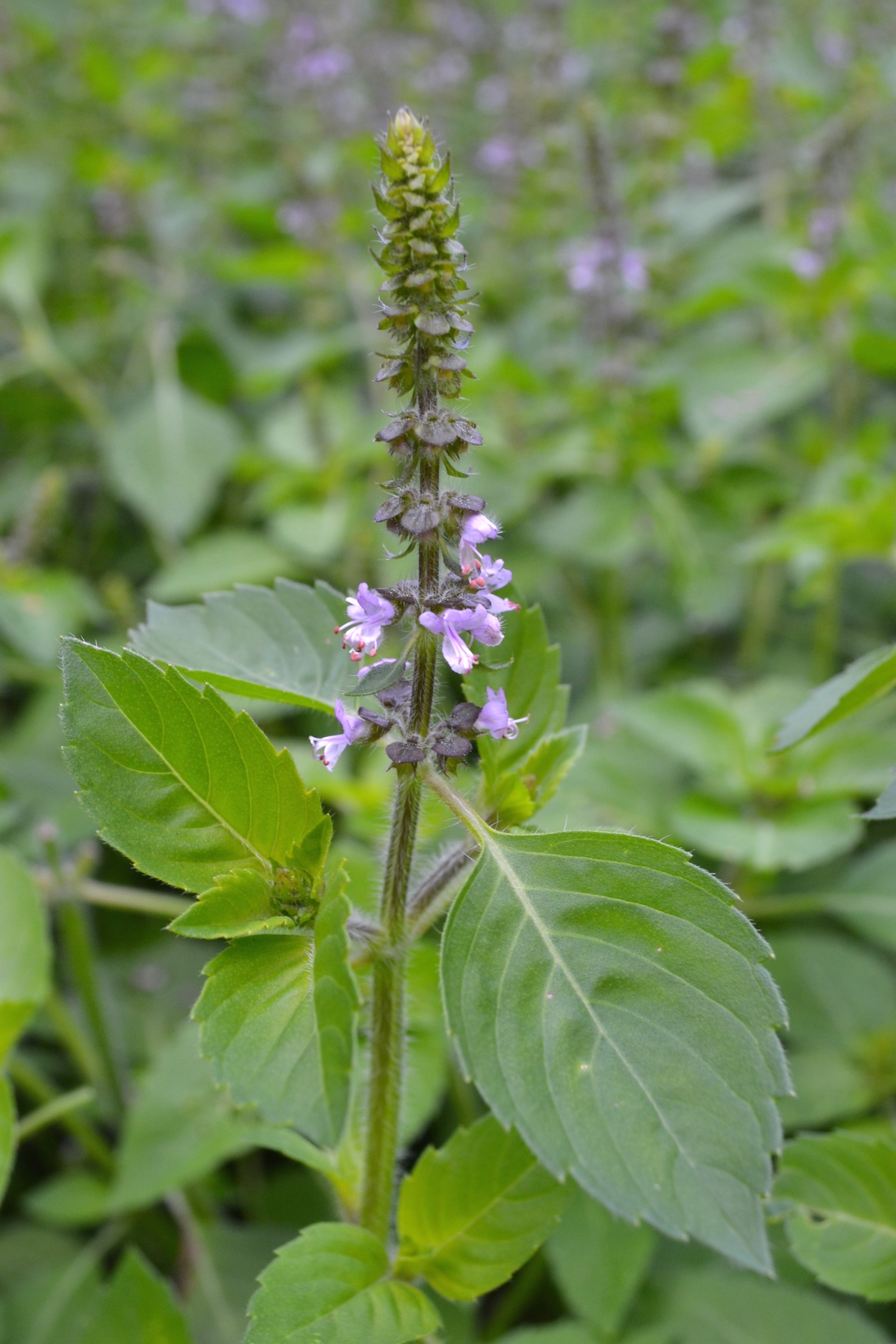
Also known as holy basil, tulsi is a highly aromatic herb revered in the Ayurvedic herbal tradition. Tulsi teases the senses and lifts the spirits with its fragrant volatile oils, supporting both the nervous and digestive systems. In Western herbalism, tulsi is classified as an adaptogen and viewed as a general tonic (Easley & Horne, 2016). Its pleasurable and spicy volatile oils aid in its ability to soothe stress, enhance cerebral circulation and mental acuity (Easley & Horne, 2016). Tulsi is considered a warming stimulant and aids the digestive system in addressing indigestion and gas (Pole, 2003). Tulsi may interfere with blood glucose regulation and people with diabetes should only take it under the guidance of a qualified healthcare practitioner (Gardner & McGuffin, 2013).
Read more about tulsi here and here.
California poppy (Eschscholzia californica)
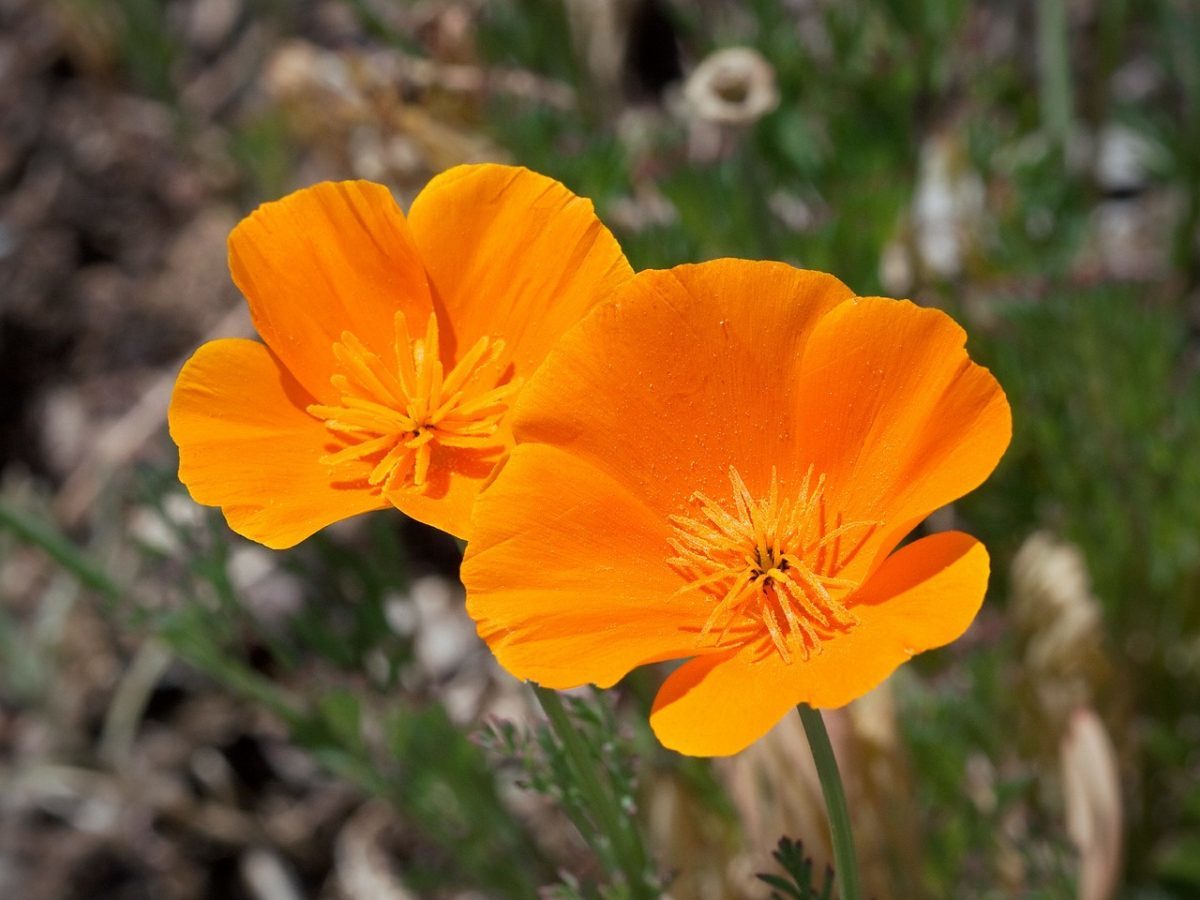
Found throughout much of the United States, California poppy has been used in Western herbalism to ease anxiety without narcotic or addictive properties. Long used by herbalists for addressing stress, insomnia, and nervous tension, it works by regulating the response of GABA receptors in the brain (Easley & Horne, 2016). All parts of the herb can be used either as a tincture or tea to help normalize the nervous system (Easley & Horne, 2016). California poppy provides a gentle nudge assisting in easing tension and stress. California poppy has an alkaloid that can be stimulating to the uterus and is therefore contraindicated during pregnancy (Tierra, 2003).
Eleuthero (Eleutherococcus senticosus)
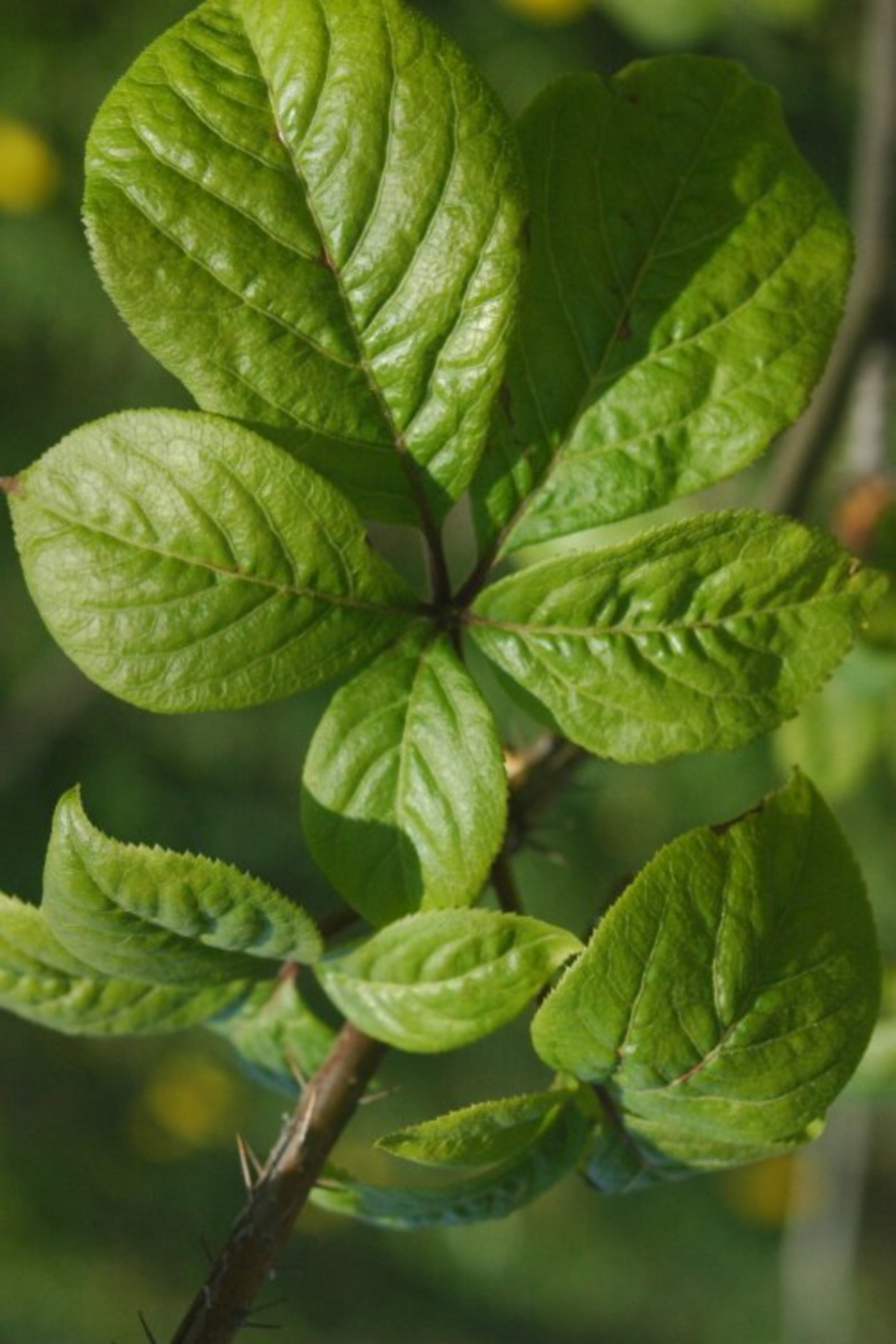
When I think of an herb to nurture energy, I look to eleuthero. Russian scientists looking for added support for athletics conducted extensive research on eleuthero, which has traditionally been used as a tonic for increasing energy and fortification against fatigue, insomnia, and anxiety (American Botanical Council, n.d.). Eleuthero promotes oxygen metabolism in the tissues and organs, thereby increasing stamina (Tierra & Tierra, 2017). Eleuthero is contraindicated when taking antibiotics or during pregnancy (Tierra & Tierra, 2017).
Find some tasty recipes here and here!
Reishi mushroom (Ganoderma lucidum)
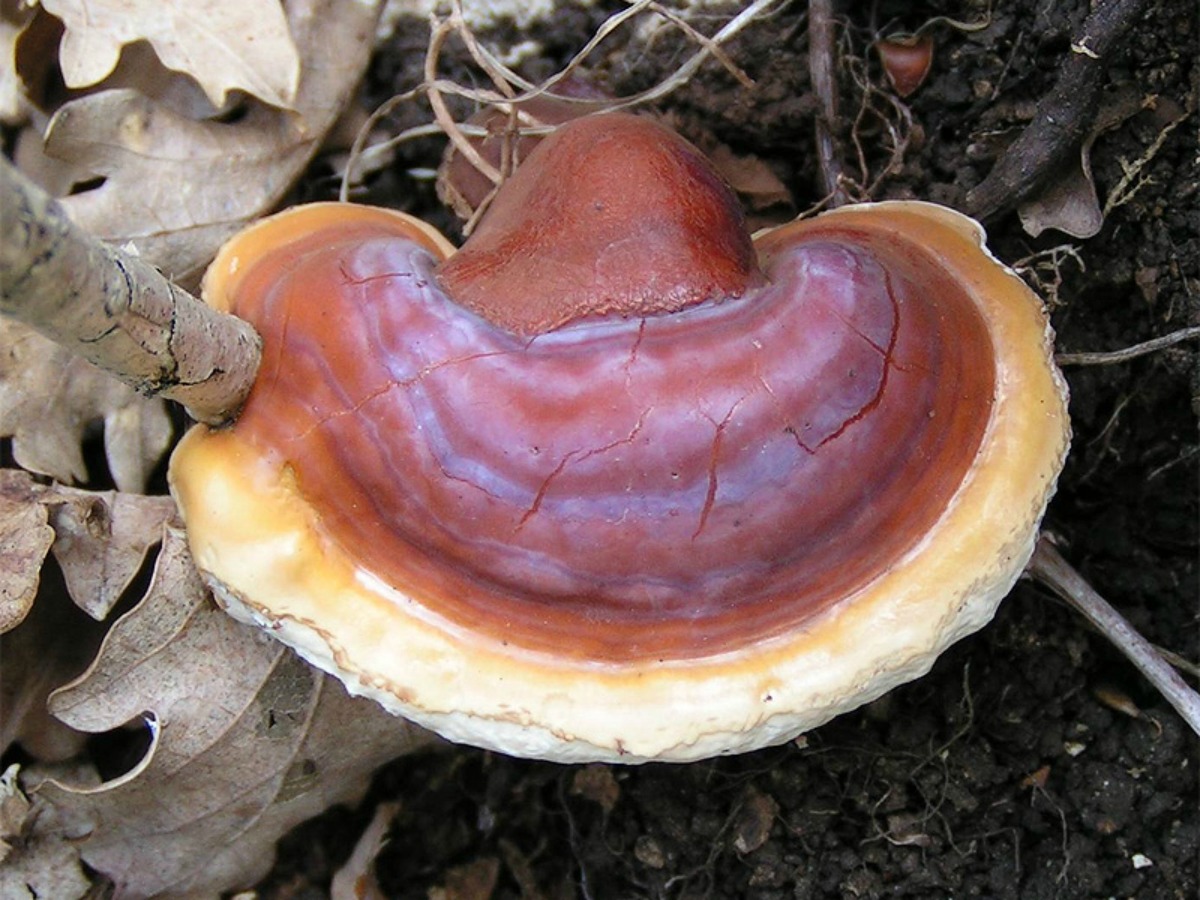
Known as the “spirit plant” by Taoists, reishi mushroom is considered an elixir of life (Tierra, 2003). Monks and spiritual sages have used reishi to deepen their reflective practice for centuries (Whitechurch, 2018). In Western herbalism, we look to reishi as a general health tonic, with research pointing to its ability to improve sleep, heart function, and chronic pain (Easley & Horne, 2016).
As is often the case, research confirms traditional and contemporary usage. Reishi contains pharmacologically active constituents including triterpenoids and polysaccharides, which support the heart, modulate the immune response, and protect against free radical damage (Boh et al., 2007). Reishi’s calming and revitalizing actions enhance our inner stamina. It is safe to use on a daily basis (Gardner & McGuffin, 2013). Learn more about reishi here and learn how to make a double extraction here.
Lemon balm (Melissa officinalis)
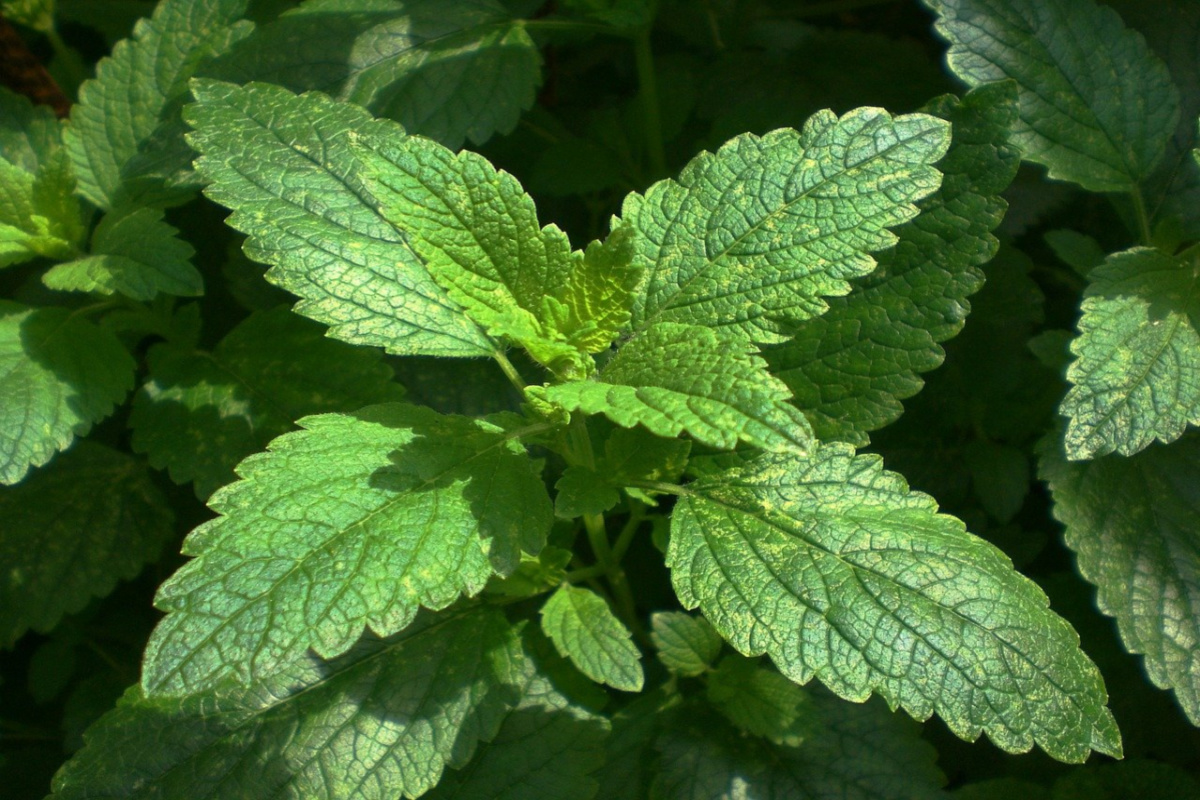
Such a gentle herb, lemon balm is both a nervine and carminative. Used by adults and children, lemon balm soothes anxiety, gladdens the heart, and brightens the mood. Its aromatic lemony scent supports the nervous system, helping to ease sadness and depression, enhance sleep, and, if that wasn’t enough, aid memory and concentration (Easley & Horne, 2016). As a carminative, lemon balm soothes digestive upset from anxiety or depression (Hoffmann, 2003). Lemon balm is used with caution during pregnancy due to mild uterine stimulating effects (Holmes, 2007).
Learn more about lemon balm here and here!
Herbal Recipes for Supporting Balance
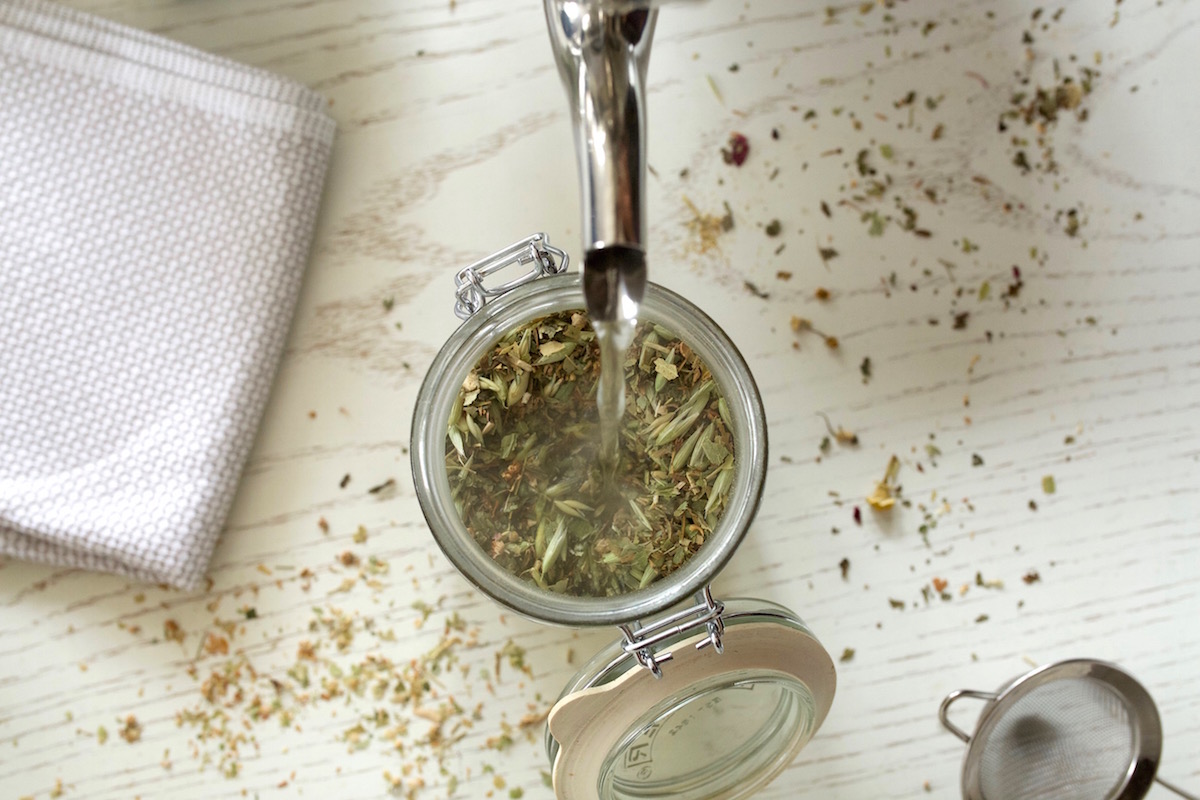
Infusing herbal tea mixtures overnight is an easy way to create a powerful nourishing infusion to be consumed the next day. All herbs in the recipe are dried.
2 tablespoons milky oat (Avena sativa) tops and/or strawNourishing Stress and Anxiety Overnight Infusion
2 teaspoons fennel (Foeniculum vulgare) seed
1 tablespoon lemon balm (Melissa officinalis) leaf
2 teaspoons California poppy (Eschscholzia californica) aboveground parts
1 tablespoon tulsi (Ocimum tenuiflorum) leaf
1 teaspoon ginger (Zingiber officinale) root
1-2 teaspoons raw honey, optional
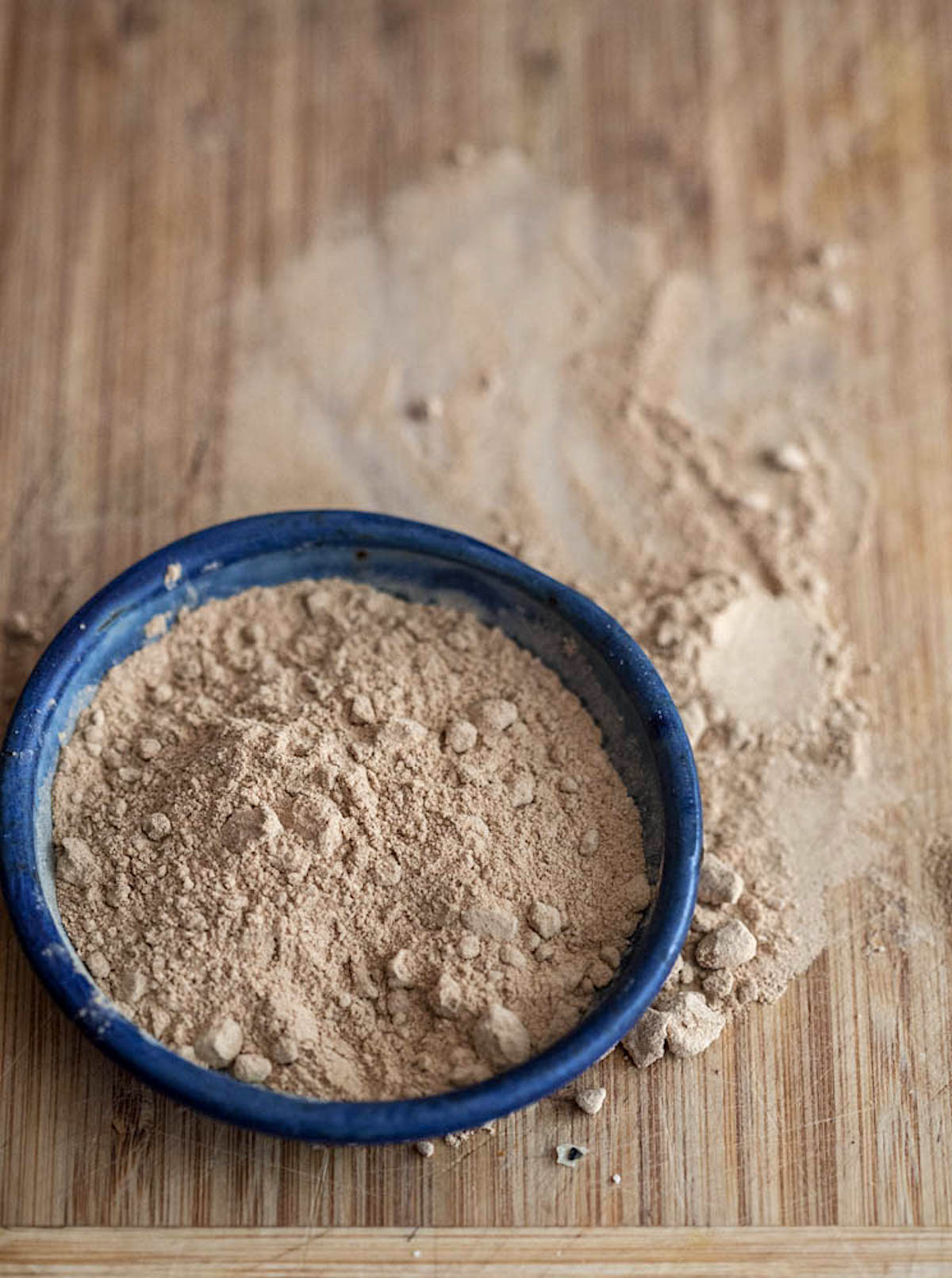
This versatile powder mix is packed full of adaptogenic herbs to strengthen the immune system and promote a calmer state. Each part can be whatever measure you prefer based on the size batch you want to make – 1 teaspoon, 1 tablespoon, ½ cup, 1 cup, etc. It can be added to smoothies, beverages, or baking mixes.
3 parts maca (Lepidium meyenii) root powderAdaptogenic Powder Mix
2 parts eleuthero (Eleutherococcus senticosus) root powder
1 part shatavari (Asparagus racemosus) root powder
1 part ashwagandha (Withania somnifera) root powder
1 part reishi mushroom (Ganoderma lucidum) fruiting body powdered extract
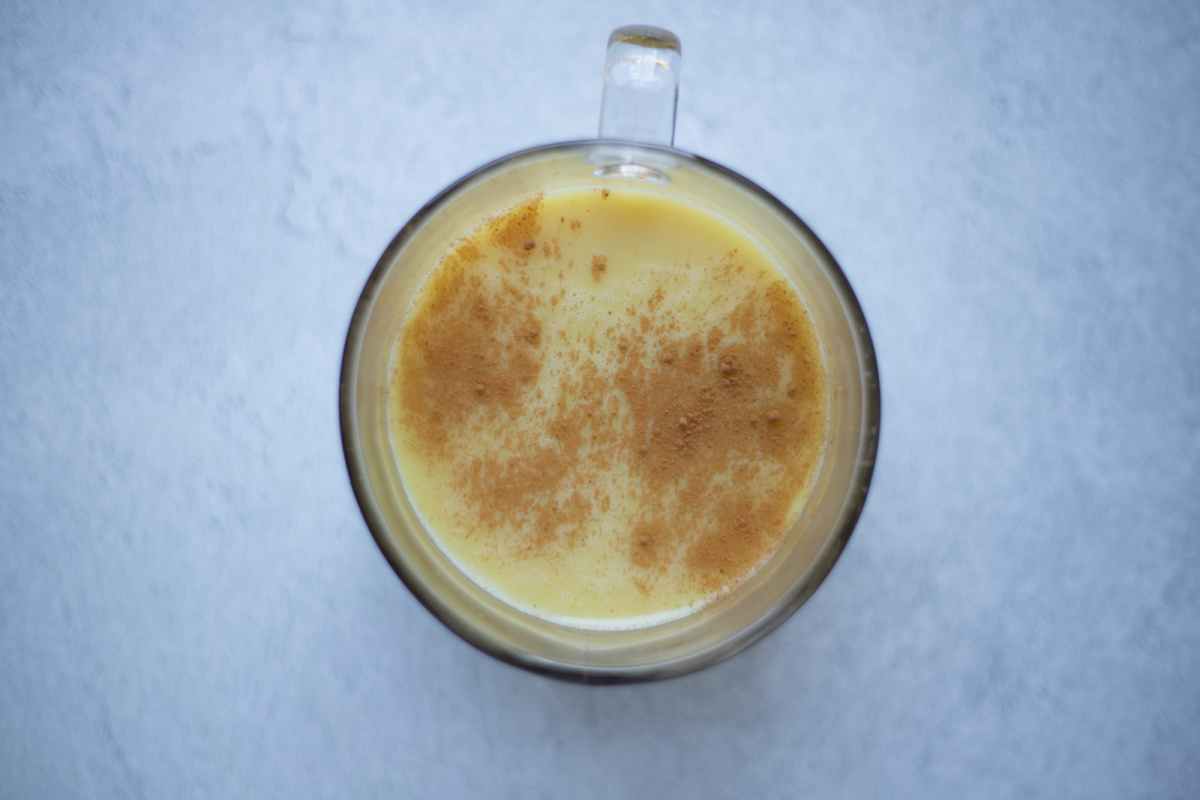
A warming nourishing beverage, golden milk is the perfect vehicle for using Adaptogenic Powder. In this recipe, oat milk is the base ingredient used to regulate blood sugar levels, dietary fiber, and cholesterol levels (Onning et al., 1999), but feel free to use another milk of your choice. Yield: 1 cup.
Golden Milk Using Adaptogenic Powder Mix
1 teaspoon Adaptogenic Powder Mix (above)
1/2 teaspoon turmeric (Curcuma longa) rhizome powder
1/2 teaspoon cinnamon (Cinnamomum spp.) bark powder
1/4 teaspoon cardamom (Elettaria cardamomum) pod powder
Pinch of ginger (Zingiber officinalis) rhizome powder
Pinch of nutmeg (Myristica fragrans) fruit powder
Freshly ground black pepper (Piper nigrum) fruit
1 teaspoon virgin coconut oil or ghee
1 teaspoon honey
Add coconut oil or ghee and honey and whisk to combine.
In Closing,
The good news is that if you feel overwhelmed and anxious in the moment or about the future, there are lifestyle, food, and herb options available to support you. Focusing on herbal support to soothe nerves, improve digestion, strengthen endurance, and support immunity is a simple step that you can take towards emotional equilibrium and achieving a better work-life balance even when you are juggling so much.
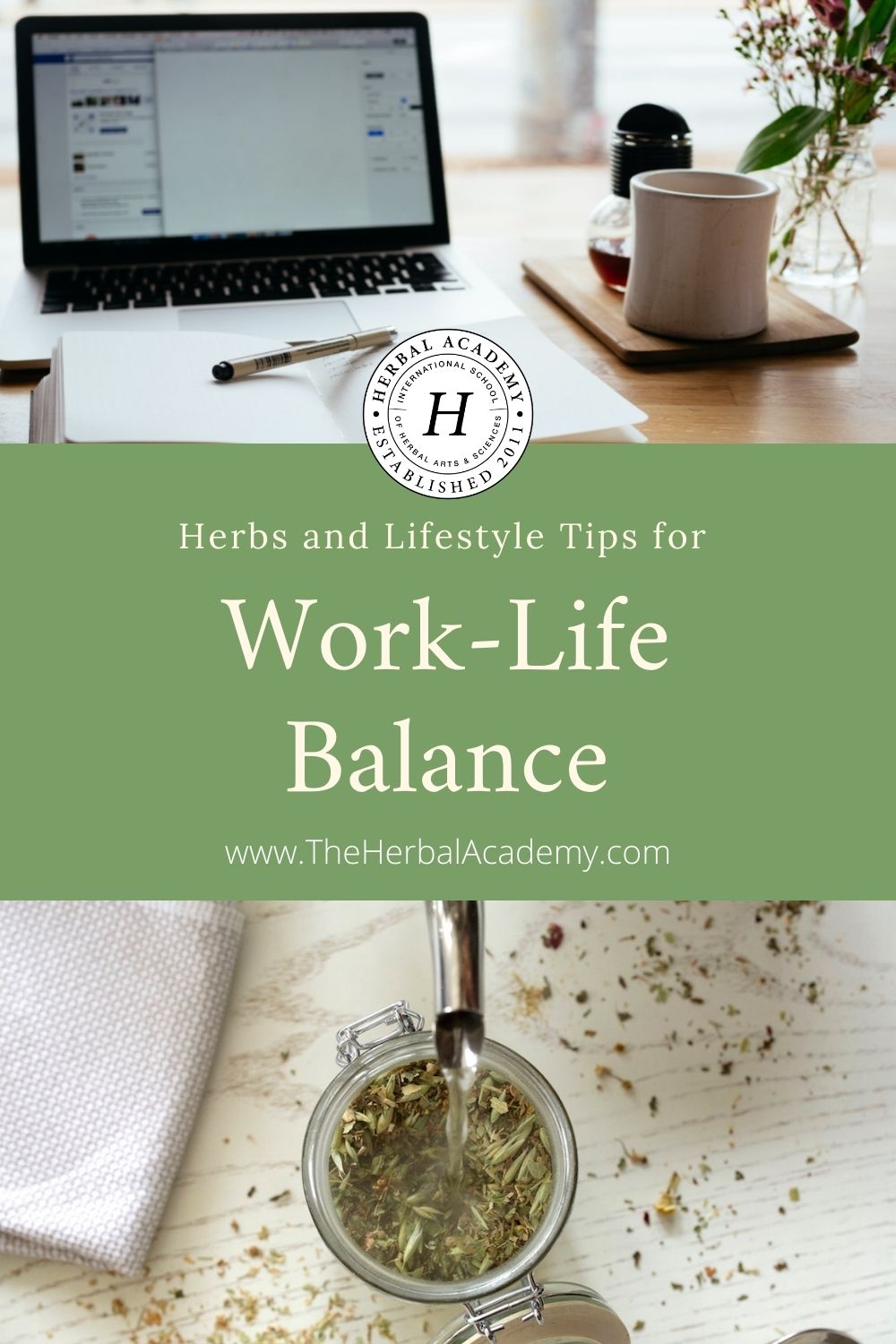
REFERENCES
American Botanical Council (n.d.). Eleuthero [Online Article]. Retrieved from http://cms.herbalgram.org/ABCGuide/Monographs/Eleuthero.html?ts=1604623175&signature=27388d50da16a318525a32f6ee7ade51
American Psychological Association (2019). Stress relief is within reach. Retrieved from https://www.apa.org/topics/stress
Berntson, G. (n.d.). Effects of stress on the nervous system. Retrieved from https://www.apa.org/helpcenter/stress/effects-nervous#menu
Boh, B., Berovic, M., Zhang, J., & Zhi-Bin, L. (2007). Ganoderma lucidum and its pharmaceutically active compounds. Biotechnology Annual Review, 13, 265–301. https://doi.org/10.1016/S1387-2656(07)13010-6
Boyle, N.B., Lawton, C.L., & Dye, L. (2016). The effects of magnesium supplementation on subjective anxiety. Magnesium Research, 29(3), 120–125.
https://doi.org/10.3390/nu9050429
Burg, M. (n.d.). Effects of stress on the cardiovascular system. Retrieved from https://www.apa.org/helpcenter/stress/effects-cardiovascular#menu
Easley, T., & Horne, S. (2016). The modern herbal dispensatory: A medicine-making guide. Berkeley, CA: North Atlantic Books.
Gardner, Z. & McGuffin, M. (2013). American Herbal Product Association botanical safety handbook. Boca Raton, FL: CRC Press.
Hilimire, M. R., DeVylder, J. E., & Forestell, C. A. (2015). Fermented foods, neuroticism, and social anxiety: An interaction model. Psychiatry Research, 228(2), 203–208. https://doi.org/10.1016/j.psychres.2015.04.023
Holmes, P. (2007). The energetics of Western herbs. Cotati, CA: Snow Lotus Press, Inc.
Hoffmann, D. (2003). Medical herbalism. Rochester, VT: Healing Arts Press.
Martin, C., Osadchiy, V., Kalani, A., & Mayer, E. (2018). . The brain-gut-microbiome axis. Cellular and Molecular Gastroenterology and Hepatology vol. 6,2 133-148. https://doi.org/10.1016/j.jcmgh.2018.04.003
Meng, X., Li, Y., Li, S., Zhou, Y., Gan, R. Y., Xu, D.P., & Li, H.B. (2017). Dietary sources and bioactivities of melatonin. Nutrients, 9(4), 367. https://doi.org/10.3390/nu9040367
Milimire, M., Devylder, J., & Forestell, C. (2015). Fermented foods, neuroticism and social anxiety. Psychiatry Research, 228(2):203-8.
Naidoo, U. (2019). Nutritional strategies to ease anxiety [Blog post]. Retrieved from https://www.health.harvard.edu/blog/nutritional-strategies-to-ease-anxiety-201604139441
National Institutes of Health (n.d.). Magnesium [fact sheet]. Retrieved from https://ods.od.nih.gov/factsheets/Magnesium-HealthProfessional/
Onning, G., Wallmark, A., Persson, M., Akesson, B., Elmståhl, S., & Oste, R. (1999). Consumption of oat milk for 5 weeks lowers serum cholesterol and LDL cholesterol in free-living men with moderate hypercholesterolemia. Annals of Nutrition & Metabolism, 43(5), 301–309. https://doi.org/10.1159/000012798
Pole, S. (2013). Ayurvedic medicine, the principles of traditional practice. London, UK: Singing Dragon.
Silber, B. Y., & Schmitt, J. A. (2010). Effects of tryptophan loading on human cognition, mood, and sleep. Neuroscience and biobehavioral reviews, 34(3), 387–407. https://doi.org/10.1016/j.neubiorev.2009.08.005
Tierra, L. (2003). Healing with the herbs of life. New York, NY: Crossing Press.
Tierra, M. & Tierra, L. (2017). East-West Profession Herbalist Course. [Online course]. Ben Lomond, CA: self-published.
Tilgner, S. (1999). Herbal medicine: From the heart of the earth. Creswell, OR: Wise Acres Press. Inc.
Varvogli, L., & Darviri, C. (2011). Stress management techniques: Evidence-based procedures that reduce stress and promote health. Health Science Journal, 5(2), 74-89. Retrieved from https://www.hsj.gr/medicine/stress-management-techniques-evidencebased-procedures-that-reduce-stress-and-promote-health.pdf
van Tilburg, M. (n.d.). Effects of stress on the gastrointestinal system. Retrieved from https://www.apa.org/helpcenter/stress/effects-gastrointestinal#menu
Whitechurch, D. (2018). How to reduce your stress and anxiety with reishi mushroom. Retrieved from https://teelixir.com/blogs/news/how-reishi-mushroom-reduce-stress-anxiety
Xu, Y., Wang, C., Klabnik, J. J., & O’Donnell, J. M. (2014). Novel therapeutic targets in depression and anxiety: Antioxidants as a candidate treatment. Current Neuropharmacology, 12(2), 108–119. https://doi.org/10.2174/1570159X11666131120231448
Yarnell, L., & Neff, K. (2013). Self-compassion, interpersonal conflict resolution and well-being. Self and Identity, 12(2), 146-159. http://dx.doi.org/10.1080/15298868.2011.649545









